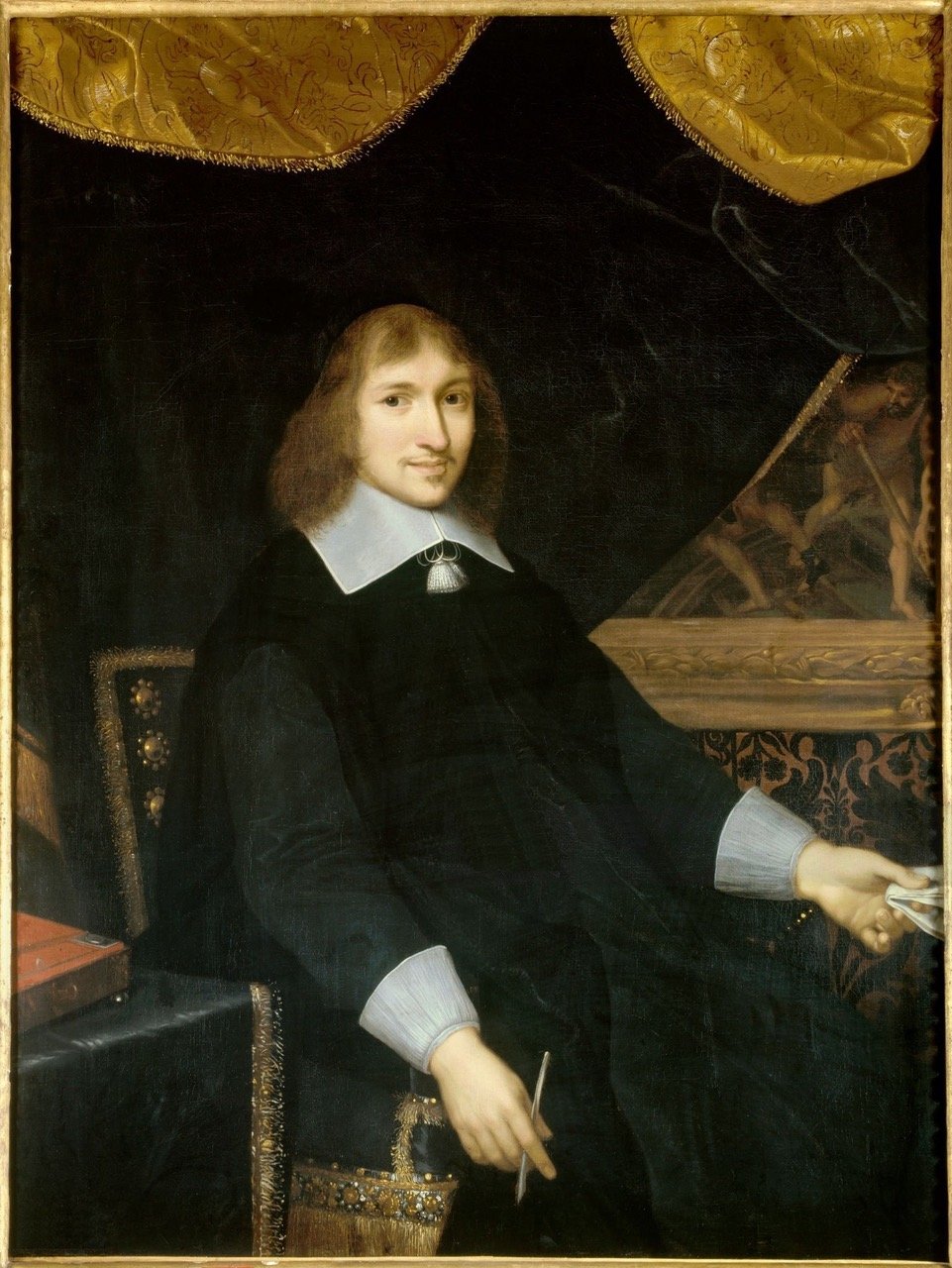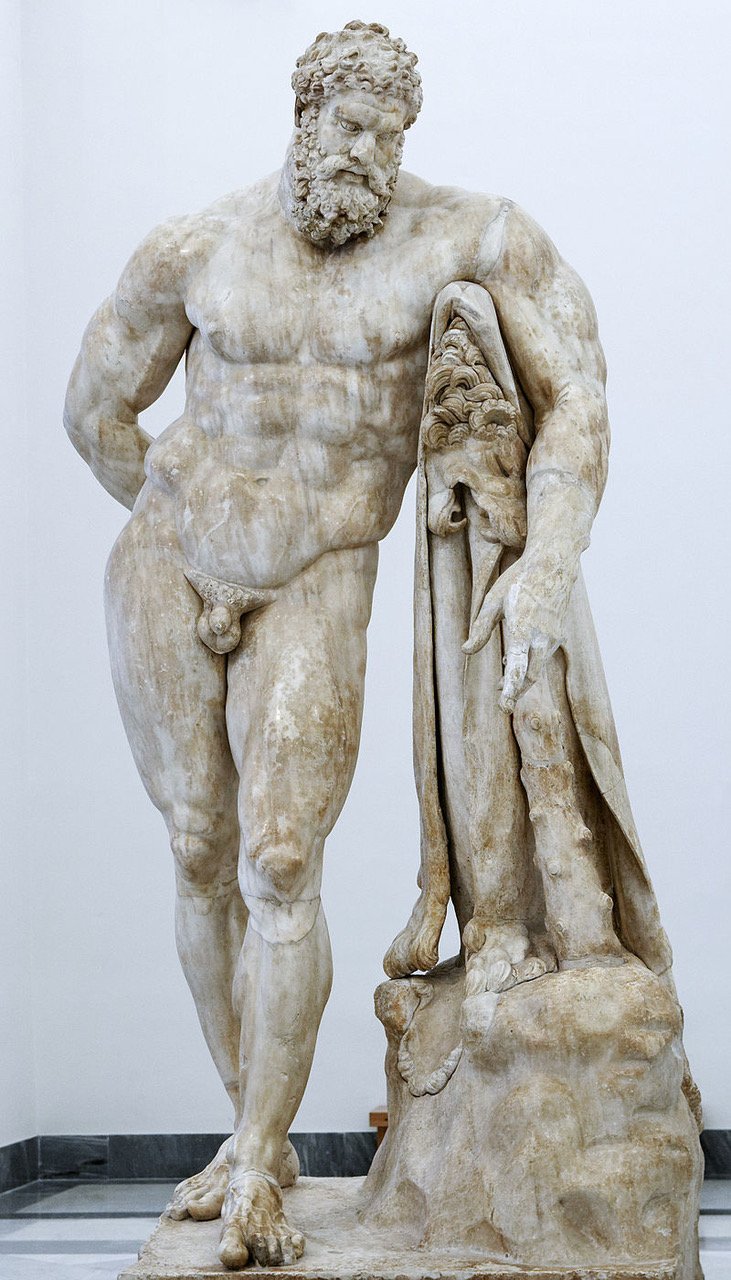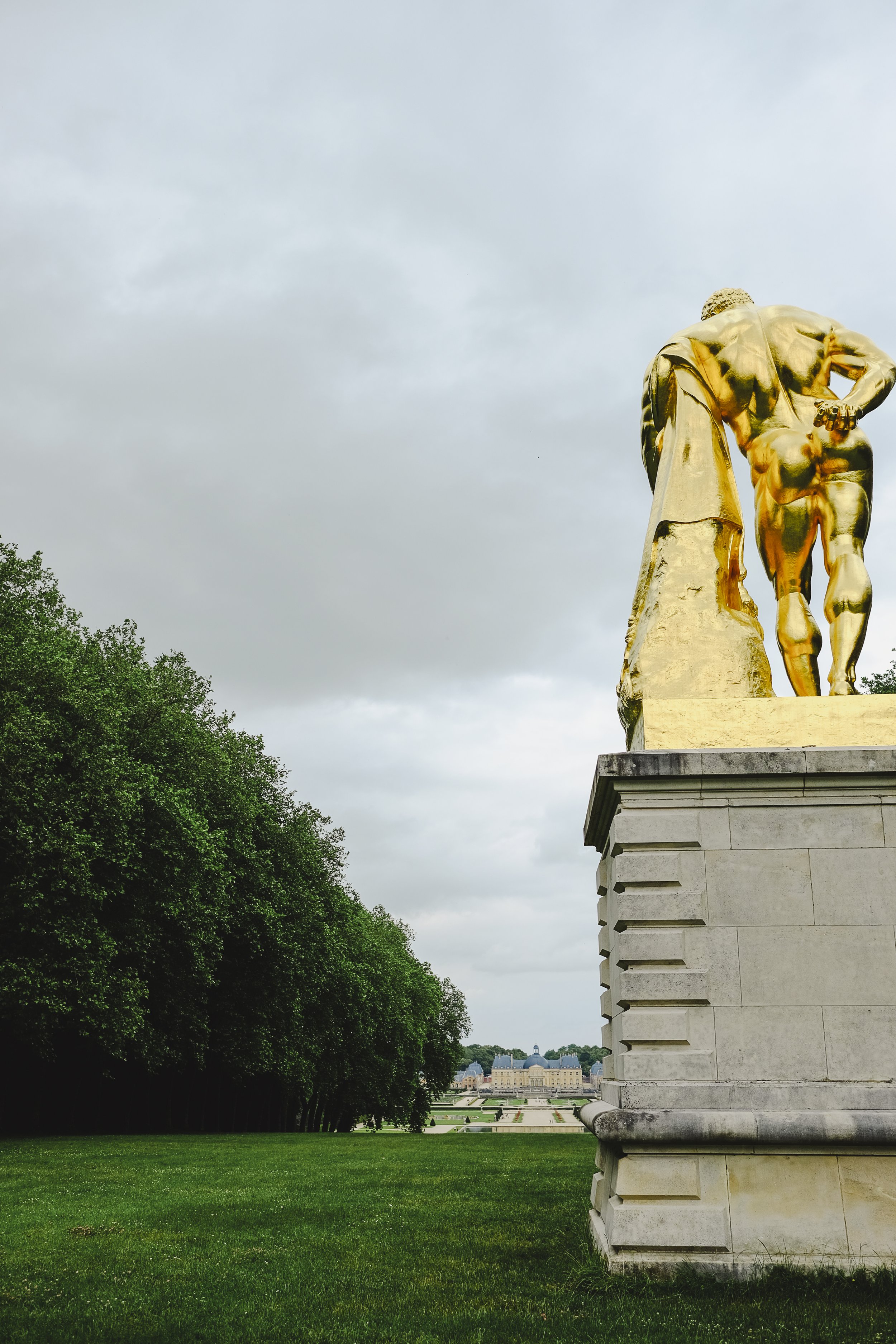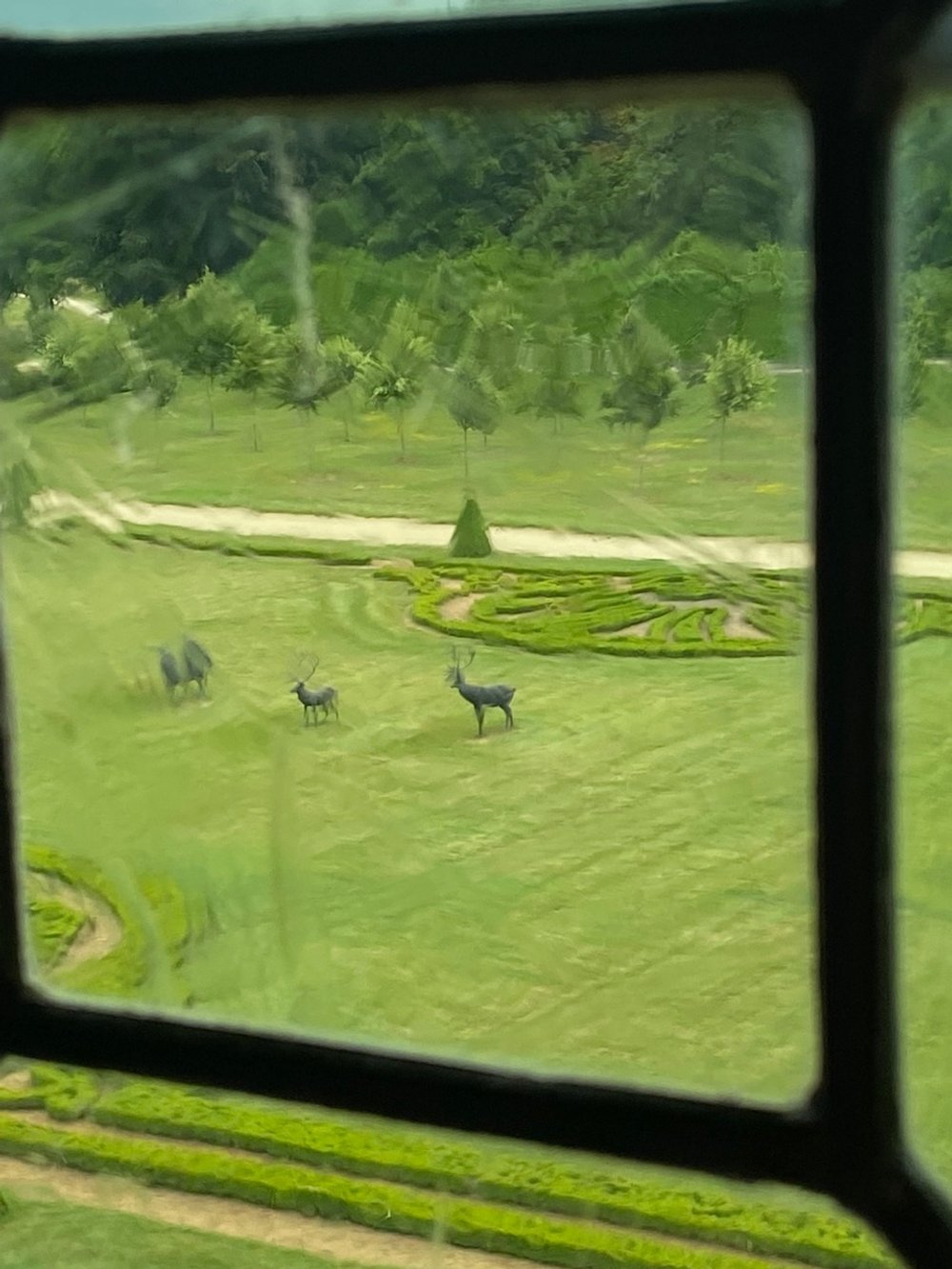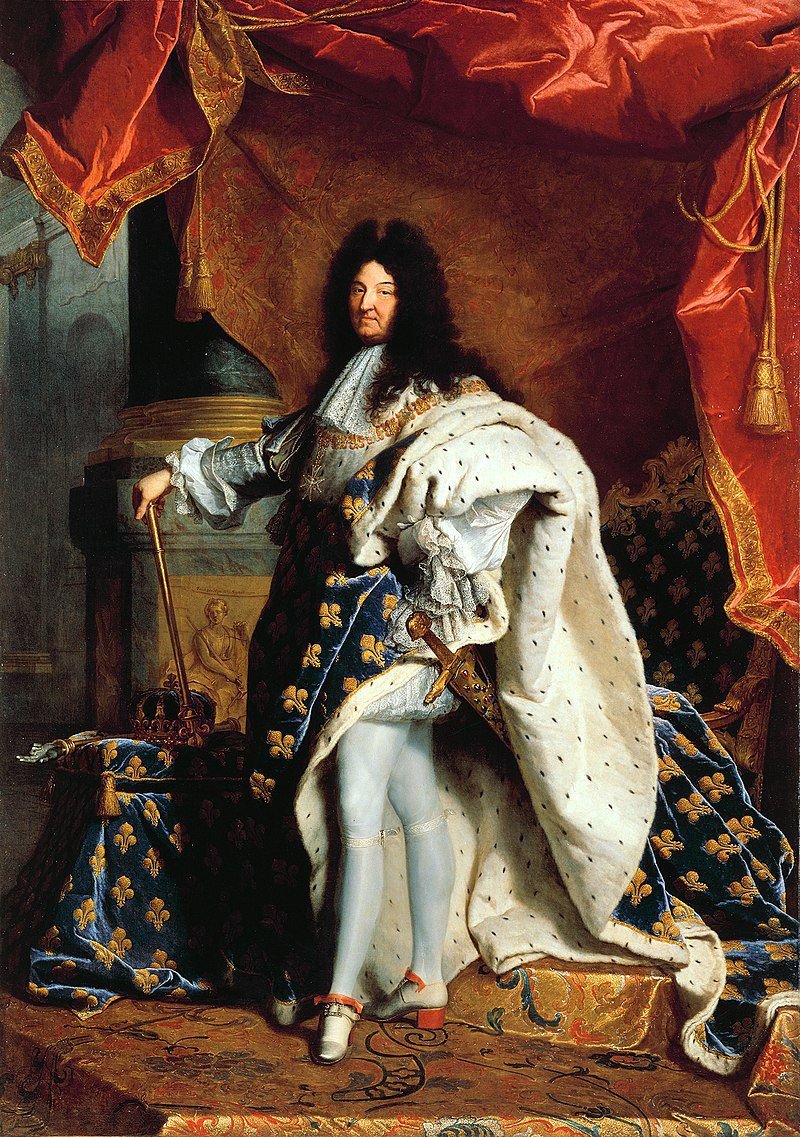Fouquet’s fateful fête
Chateau de Vaux-le-Vicomte
Bienvenue and welcome back to Musée Musings, your idiosyncratic guide to Paris and art. I had every intention of telling you about the exhibition at the Petit Palais, the one on Sarah Bernhardt. And then, as so often happens to me, I fell into a rabbit’s hole or maybe it was a maze of amazing information.
As I was drowning in Bernhardtianna - Ginevra decided that I needed a break and suggested Vaux-le-Viconte. (Figure 1)
Figure 1. Vaux-le-Vicomte, architect, Louis Le Vau (photo, Ginevra)
gardens (photo, Ginevra)
Have you ever been? We went by public transportation. It was easy, as soon as we figured out how to purchase a train ticket. Well, actually it was finding the kiosk that sold the tickets we needed. The train to Melun (Vaux-le-Vicomte stop) departs from Gare de Lyon. The ride is non-stop and less than 30 minutes. At Melun, there are two choices: call a taxi and hope for the best or have the Uber app on your telephone. And also hope for the best. We called an Uber, 15 minutes later we were at the Chateau.
We went on Monday. Which is an excellent way to spend a Monday if you are in Paris. All the other tourists will be at the Louvre. The only people we had to share Vaux-le-Vicomte with were lively little people and their bossy teachers. Armed with a picnic we brought from home and two extra bottles of water we got at the train station (people are always handing out water at train stations in Paris when it’s hot - less expensive than treating people passing out from heat exhaustion is my guess). We ate our lunch in the garden watching the other 150 or so brown baggers enjoy their lunches (quick) and their playtime (until their teachers called them away).
the view for our picnic (photo, Ginevra)
Vaux-le-Vicomte represents a magical collaboration of painter, architect and landscape architect. Charles Le Brun, Louis Le Vau and André Le Notre. Charles Le Brun who convinced Louis XIV that France needed a Royal Academy of Painting and Sculpture and then convinced his king that he should be its director, is mostly forgotten now - his meters of historical, religious and mythological paintings for crown and church can be found mostly in museum reserves and poorly lit church apses.
The architect Le Vau, along with his contemporary, François Mansart (after whom the mansarde roof is named) is credited with creating French classicism, the “Louis XIV” style. Known for its simplicity of construction and elegance of decoration. His greatest work was the Chateau de Vaux-le-Vicomte.
Figure 2. André Le Nôtre at Versailles
The most important of the three was the landscape architect, Le Nôtre. (Figure 2) He had gardening in his blood - his father was a gardener, his grandfather had been one, too. There were also gardeners on his mother’s side. And he grew up in the Tuileries. Le Nôtre’s training was diverse - in addition to horticulture, he studied drawing and painting with Simon Vouet, Louis XIII’s painter; sculpture with someone else and architecture and perspective with Mansart.
Le Nôtre is celebrated as the father of the ‘jardins à la française,’(formal French gardens). Now he is best known for the gardens he created at Versailles for Louis XIV. But before Versailles was a gleam in Louis XIV’s eye, Le Nôtre created the gardens at Vaux-le-Vicomte for Nicolas Fouquet. (Figure 3) For five years, from 1656 to 1661, Le Nôtre moved Earth if not Heaven for Fouquet, completely redefining the landscape with parterres, water features and groves.
Gardens of Vaux-le-Vicomte from Chateau tower (photo by Ginevra)
gardens looking back toward chateau (photo, Ginevra)
Figure 3. Nicolas Fouquet painted by Charles Le Brun
The garden’s layout ingeniously plays with distance and perspective. As you admire the grand allée from the terrace of the chateau, it looks straightforward and not especially long. But as you experience it in real time, as you walk along the allée, some things look closer than they actually are, like the grottoes. And some things disappear altogether for a while, like the statue of Hercules.
on the way to Hercules (very small in distance)
looking back at Chateau (photo, Ginevra)
rest on the way to Hercules (looking back at Chateau)
a gold drenched nymph
The grottos (left)
grotto middle, Ginevra at top for scale (photo, moi)
grotto right
Here’s one example: when you think you are almost at the statue of Hercules, after you have mounted the steps from the grotto, the canal you have seen all along, all of the sudden seems as if it will keep you from your goal. Hercules is on the other side. You have to cross the canal but it is not immediately obvious how. Finally, depending upon how hazy the day is, you can make out what might be a footbridge in the distance to the left and another, probably as far away, to the right. You choose sides, traverse the canal, walk back to the center, and all of the sudden, Hercules has disappeared. Hoping that it wasn’t a mirage all along, you hike up another hill, (hoping that it will be the last), and finally reach your destination. A huge stone copy of the Farnese Hercules. BTW there are golf carts available for hire. Based upon the carts we encountered, you don’t need a driver’s license to drive one!
Hercules in the distance, beckoning
Hercules dissapeared as we got closer!
I was sitting on the bench in front of Hercules, watching waves of school children run up the hill to the statue. The boys kept commenting upon Hercules, using a word that I didn’t understand. I think it was ‘kiki’. When a young girl asked if she could sit next to me, I took the opportunity to ask her what the boys were saying. She explained, using another word I didn’t understand, zizi. Finally she told me that the boys were commenting upon Hercules’ ‘partie intime.’ Of course, they were!
me and Hercules (photo, Ginevra)
some of our many school companions (photo, Ginevra)
Hercules, has recently been restored thanks to an American benefactor. Now the statue gleams with gold leaf, as he had originally. Well, not exactly originally. Hercules had figured in Le Nôtre’s original plan for the garden, but Nicolas Fouquet’s problems with the king happened before the statue could be installed. The man who purchased the Chateau in the 19th century, decided to finish the garden as its original owner had intended, so he ordered a gold leafed stone copy of the Farnese Hercules. During the 20th century the original gold leaf had all but disappeared. Now, all of Hercules gleams brightly in the sun.
gleaming Hercules (photo, Ginevra)
view from Hercules perspective (photo, Ginevra)
The Farnese Hercules is one of the best known statues from antiquity. (Figure 4) The Roman marble copy (on which the one at Vaux-le-Vicomte is based) of the now lost Greek bronze was discovered in 1546 and quickly acquired by Cardinal Alessandro Farnese, grandson of Pope Paul III. The bronze original had survived 1500 years. Until 1205, when it was melted down by Crusaders during the Sack of Constantinople.
Figure 4. Farnese Hercules, Roman marble copy after a now lost Greek bronze statue
The statue shows an older, but still very muscular Hercules, leaning on his club, over which the skin of the Nemean lion is draped. Killing the Nemean lion was the first of Hercules’ Twelve Labors. The accomplishment of the 11th is indicated by the three apples he holds in his hand behind his back. The apples of the Hesperides.
(photo, Ginevra)
Hercules and his Chateau (photo, Ginevra)
I know this Hercules well. He is the model upon which so many paintings of the Choice of Hercules are based. (Figure 5) That is, Hercules’ choice between the easy path of luxury (or vice - on right) or the arduous path of virtue.
Figure 5. Hercules at the Crossroads (between Virtue and Luxury) Paolo de Matteis
So, that’s the garden. André Le Nôtre began designing the gardens at Versailles as soon as work on Vaux-le-Vicomte was halted. Because he assiduously avoided court intrigue, he was able to move unscathed from Vaux-le-Vicomte to Versailles after the arrest of Fouquet in 1661.
Chateau dance (photo, moi)
A tour of the chateau includes an audioguide. As you make your way through the chateau, the audioguide does not tell you about the mostly modern copies of 17th century furniture, paintings and prints. Instead you learn about Nicolas Fouquet. The last time I was at Vaux-le-Vicomte, it must have been a decade ago, you wandered through the chateau looking at stuff, looking at the fabulous views of the gardens from various vantage points, oblivious to the fate of its original owner until you got to Fouquet’s study. Where a hologram of the man himself explained how he had fallen out of favor with the king.
View from the window of Vaux-le-Vicomte of Stag sculptures (photo, moi)
This time, as you move from room to room, your headphone allows you to eavesdrop on conversations Fouquet has with his wife and his mother-in-law. From time to time, his servant explains things. At the end, we overhear Fouquet’s conversation with Louis XIV. The story is fascinating but it’s also distracting. You are caught between wanting to look around and wanting to listen to the drama of Fouquet’s life. I’m sure if I were more adept, I would have been able to pause and resume but I couldn’t. And since Ginevra had opted not to get the headphones, it was even more complicated.
The story of Nicolas Fouquet is this. He became Louis XIV’s Superintendent of Finances at age 38, a position he held for the next 8 years, until 1661. When the King’s Chief Minister Mazarin died that year, both Fouquet and his rival Colbert, wanted to replace him. One evening in August, 1661, Fouquet hosted a glorious entertainment at Vaux-le-Vicomte to celebrate the nearly completed chateau. Hundreds of nobles and the King were invited. They dined on gold plates, they watched fireworks, they saw a ballet and then a performance of a play by Moliere, After his guests had gone to sleep, Fouquet was summonsed to Louis’ room. This is what I overheard on my headphones. The King told Fouquet that it didn’t look good for Fouquet to be so rich and the Kingdom to be so poor. So Fouquet offered to give Louis Vaux-le-Vicomte as a present. That angered the King even more. How would it look, Louis asked Fouquet, if a King accepted a gift from a minister. It would make the King look even poorer. Damned if you do, damned if you don’t.
The fête is often cited as the cause of Fouquet’s downfall. But Louis XIV didn’t trust Fouquet. He thought he was too rich, too independent, too ambitious. And the King had been secretly plotting with Colbert to get rid of Fouquet for months before the August fête. Fouquet was arrested a few months after it, accused of peculation (maladministration of the state's funds) and lèse-majesté (actions harmful to the well-being of the monarch). While awaiting trial and during the three years of the trial itself, Fouquet was imprisoned. Many important people took Fouquet’s side and even wrote letters on his behalf, like La Fontaine and Madame de Sévigné.
In 1664, Fouquet was found guilty and sentenced to banishment from the kingdom. The King thought the sentence was too lenient, so he changed it to life imprisonment. And of course, the confiscation of all of Fouquet's property, including his beloved Vaux-le-Vicomte. Fouquet died in prison 15 years later.
For all its beauty, Vaux-le-Vicomte is also a cautionary tale. Don’t flaunt your wealth, at least not in front of people who are more powerful than you. As Hilary Mantel’s trilogy taught us about traumas and terrors that awaited those who got too close to Henry VIII so Vaux-le-Vicomte is a warning against getting too close to other powerful dictators, not only Louis XIV. (Figure 6)
Figure 6. Louis XIV by Hyacinth Rigaud
Oh dear, I haven’t told you about the tower. There is one but if you want to walk all the way up on a rather rickety circular stairs, you will have to pay another 5 euros. Which was a surprise but which we did for the pleasure of the bird’s eye views it offered of this glorious chateau and its grounds.
the rooftop view (photo, Ginevra)
gardens from roof (photo, Ginevra)
(photo, Ginevra)
Copyright © 2023 Beverly Held, Ph.D. All rights reserved
Dear Reader, I hope you enjoyed reading this article. Please sign up below to receive more articles plus other original content from me, Dr. B. Merci!
And, if you enjoyed reading this review, please consider writing a comment. Thank you.







